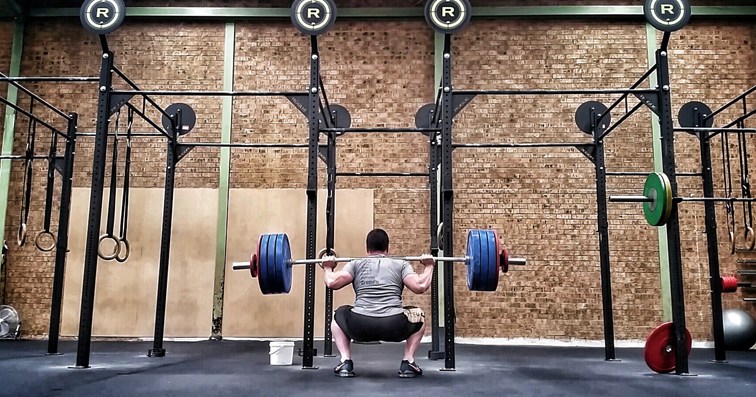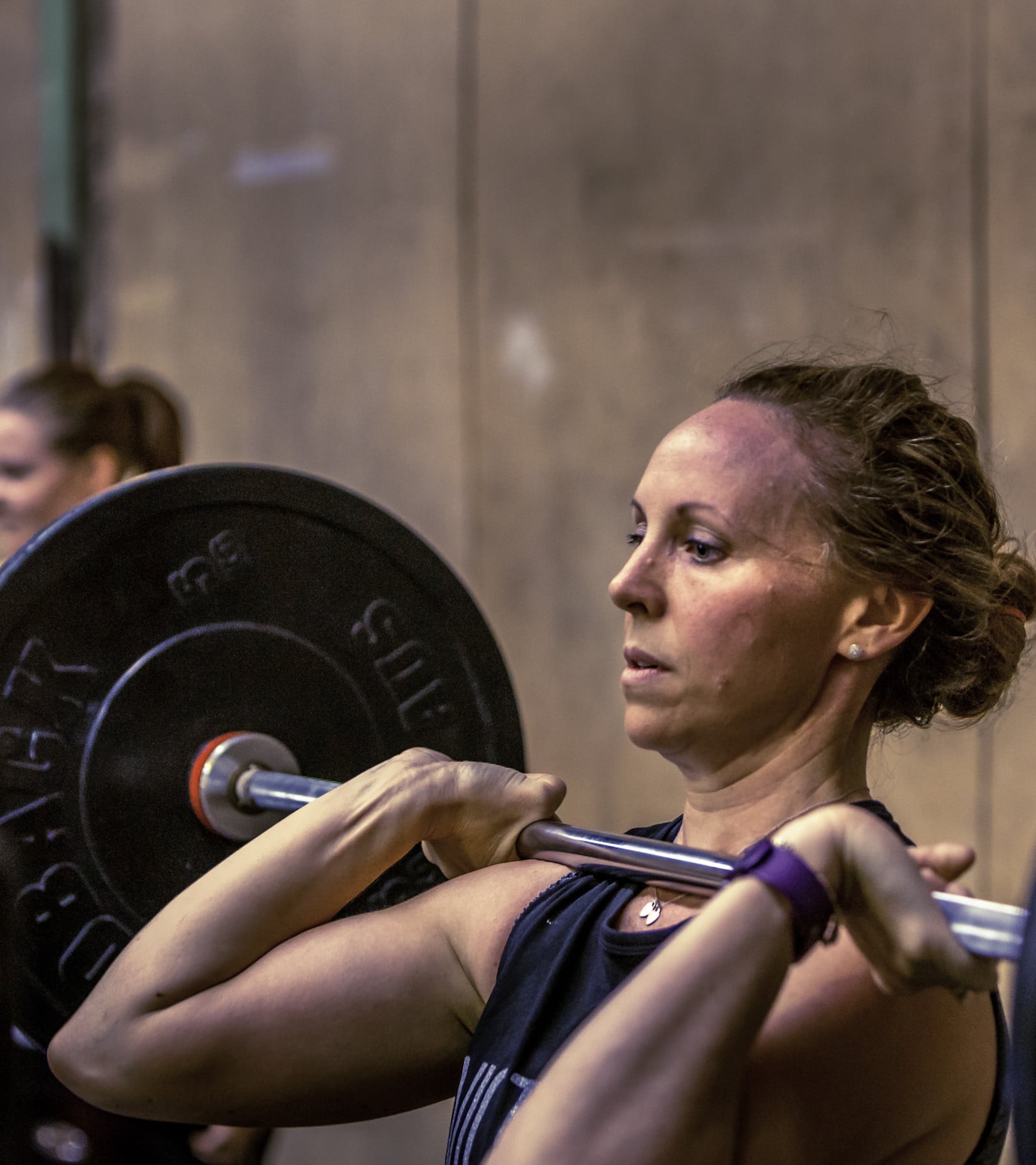Have you hit a wall with your squat progress and want to boost your numbers?
Squatting is one of the best ways to improve not just your leg strength and build a strong base but it is an all body movement that will increase strength all round and act as a great performance transfer whether you are a CrossFitter, Olympic Weightlifter, runner or just want to get better at your sport!
Check out these 8 tips on how you can bust through squat training plateaus and reap the benefits!
Squat more than once a week
This seems straight forward but increasing your frequency of squatting can speed things up for you.
When you first start training squats, once a week is usually enough to illicit steady progress but after a few months and once things begin slowing down in terms of progress, you will want to add a second session in per week if getting stronger in your squats is the goal.
If you have been training for 1 year or more and are already doing 2 squat sessions then this is where you can look at increasing to 3 or even 4 squat sessions a week, it just depends on what the rest of your training looks like, your goals and if you can prioritise this.
Competitive Olympic weightlifters squat 5 (or more) times a week and they are some of the best squatters in the world pound for pound… but keep in mind their sole focus is to get stronger in lifting and squatting is one of their main tools.
Varying tempo, reps and sets
Have you tried to slow down the eccentric portion of your squat to create more time under tension? Ever tried a 5-6 second negative tempo per rep, what about 2-3 second pauses at the bottom?
If you normally do 4-5 working sets, try 6-8 working sets especially if you are working a low rep range and at a percentage.How about trying 10RMs? Even 20RMs!
How about trying 10RMs? Even 20RMs! Yes higher reps are technically not within the realm of ‘strength’ training but the extra reps will definitely help with both leg size and muscle density and you can’t tell me that if you boost your 10RM by 10-20kg that you aren’t getting stronger!
These are just a few ways you can try to vary up your squat routine outside of a typical linear progression, 5 x 5, 3 x 3 rep scheme etc… These methods will help with plateau busting as your body is not used to the stimulus here and will be challenged and forced to adapt, pick 1 or 2 of these varieties and try to progress them over a 4-8 week block.
Kendrick Farris one of America’s top Weightlifters and 3 x Olympian utilises 10 rep back squats in his training.
Go low!
We are talking about squat depth, if you are someone that goes to full depth but when it comes to your 1RM you barely break parallel (hip crease should reach below knee level) then focus on training at sub-maximal percentages and hitting depth.
If you are always trying to get a new record in your 1RM but aren’t hitting good depth then you are creating bad habits that will only limit your strength progress long term, the bottom of the squat is where the most muscle recruitment comes into play involving more of your posterior chain (glutes, hamstrings). If you struggle to get good depth in general then see the next point!
Quality of movement
The best advice here is to seek a good coach and/or physio/professional to assess your squat movement and what areas need to be addressed.
Everyone is unique so what someone else needs to work on may not be what you need to prioritise. Do you have tight hips or glutes or need to work on ankle range of motion, do your knees cave in? Addressing your limitations will not only help with injury prevention but optimise your movement to allow for a higher ceiling of progression in your training, you can only get so far with poor mechanics and range of motion!
Glute activation
Whether you are working in an office or driving around, prolonged periods of sitting causes our glutes to go to sleep!
If our glutes are not firing then this is a big problem as other areas of our body tend to take the load when squatting heavy including our lower backs.
Incorporating glute activation work especially in your warm up/prep routine prior to squatting can be very beneficial as it ensures that you are using all the right muscles. Glute activation work is recommended after any mobility/self release work.
Upper back strength
Squats are an all body movement especially if your are doing weighted back/front squats!
Having a strong upper back is integral in a strong squat, if you find your torso caving/collapsing in a heavy squat or too much of a forward lean as you are coming up then try to add some sort of upper back strengthening into your routine twice a week.
Any sort of upper body pulling work (single arm dumbbell rows, barbell rows, seated cable rows, reverse flys, pull ups…) will help!
Unilateral work
Single leg work is important if this is not something you are currently doing and your squat progress has stalled, it may be your missing link!
This will help work any imbalances you might have from left to right side. Single leg work is also less taxing on your CNS than heavy squatting so is something you can add to your leg training at the end of a squat session or even on a different day for extra volume. Lunges, Russian step ups, single leg Romanian deadlifts and Bulgarian split squats are some of our favourite unilateral variations that you can add to your routine.
Train Submaximal
There comes a point where you cannot simply just try to max out every time you squat, week to week and continue to progress.
Sure it’s great to try and go for it once in a while to test yourself and see where you are at but squatting is a movement and movements require training! So instead spend plenty of time working at around anywhere between 70-90% of your best squat, this will allow your body to be well trained in the movement.
Submaximal training allows you to focus on dialling in your form and getting stronger in the long run!
We hope you can apply some of these principles to your training and really improve your squat/strength, remember to be patient as strength is a long game and squatting is a skill that times time and practice to develop, even when your 1RM number improvement is far and few between, there is still plenty that can be worked on and improved in training!
Happy Squatting!

Come in for a FREE Intro Session, discuss your SPECIFIC goals and see if we are a good fit.
You don’t need to be “in shape” to come to our gym, nor do you need prior fitness or training experience to achieve your goals with us.
The Free Intro Session is a chance to see our gym and get a feel for 365 Performance.
These meetings are one on one with one of our friendly and knowledgeable coaches and last for around 30 minutes.
Don’t be like others who spent years ‘thinking’ about it. They ended up just being another 5-10kg+ heavier and in worse shape than they are now.
Take action and complete the form on this page to organise a Free Intro Session with us now.




